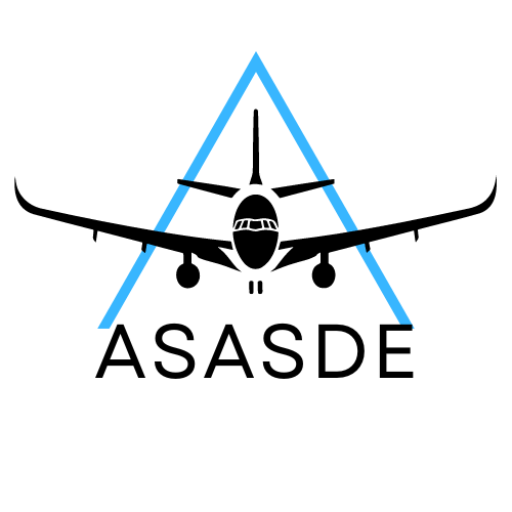Introduction
As urban air mobility and the use of air taxis become increasingly prevalent, understanding and mitigating the effects of turbulence on these vehicles is crucial for ensuring passenger safety and comfort. NASA, a leader in aerospace research and innovation, has initiated a groundbreaking study that employs individual test subjects to analyze weather taxi turbulence. This research aims to develop advanced systems and protocols to enhance the safety and efficiency of air taxis, which are set to revolutionize urban transportation.
In this comprehensive article, we explore the details of NASA’s study, the significance of the research, the methodologies used, and the potential implications for the future of air travel. We also highlight the role of Asasde in providing valuable insights and information on this emerging field.
The Importance of Studying Weather Taxi Turbulence
Weather taxi turbulence, caused by various atmospheric conditions, poses significant challenges to the safe and efficient operation of air taxis. As these vehicles often operate at lower altitudes where weather patterns can be more unpredictable, understanding and mitigating turbulence effects is essential for several reasons:
Passenger Safety: Turbulence can cause discomfort or even injury to passengers. A thorough understanding of turbulence effects can lead to better safety protocols and design improvements.
Vehicle Integrity: Prolonged exposure to turbulence can cause wear and tear on air taxi components, leading to increased maintenance costs and potential failures.
Operational Efficiency: By predicting and managing turbulence, air taxi operators can optimize flight paths, reduce fuel consumption, and minimize delays.
NASA’s study focuses on these critical aspects, aiming to create a safer and more reliable urban air mobility ecosystem.
Methodology: Using Individual Test Subjects
To gain a deeper understanding of how turbulence affects passengers and vehicles, NASA is using individual test subjects in controlled environments. This approach involves:
Simulated Flight Conditions: Test subjects experience various turbulence scenarios in flight simulators, allowing researchers to observe physiological and psychological responses.
Data Collection and Analysis: Researchers collect data on passengers’ comfort levels, stress responses, and the impact of turbulence on vehicle systems.
Real-World Testing: The study also includes real-world testing with air taxis in different weather conditions, providing valuable data on how actual weather events impact flight.
This comprehensive methodology ensures that the findings are robust and applicable to real-world operations.
Significance of NASA’s Research for Urban Air Mobility
NASA’s research is pivotal for the future of urban air mobility, offering insights that can lead to significant advancements in air taxi technology and safety protocols. Key contributions of this research include:

Enhanced Safety Standards: Developing guidelines for turbulence management and safety protocols can set new standards for the industry.
Improved Vehicle Design: Understanding the effects of turbulence on air taxis can lead to design improvements that enhance stability and passenger comfort.
Operational Guidelines: The research can inform best practices for air taxi operators, including optimal flight paths and weather-related decision-making.
These contributions are essential for the growth and acceptance of air taxis as a viable mode of urban transportation.
The Role of Asasde in Providing Information and Insights
Asasde is a leading platform that offers comprehensive information on advanced air mobility and related technologies. With detailed articles, expert analyses, and updates on the latest research, Asasde is an invaluable resource for anyone interested in the field.
In the context of NASA’s study on weather taxi turbulence, Asasde provides:
In-Depth Articles: Detailed coverage of the study’s findings and implications for the industry.
Expert Insights: Analysis and commentary from experts in aerospace engineering and urban air mobility.
Resource Links: Access to related research papers, industry reports, and further reading.
By offering a wealth of information, Asasde helps industry professionals, policymakers, and the public stay informed about the latest developments in urban air mobility.
Potential Implications for the Future of Air Travel
The outcomes of NASA’s study on weather taxi turbulence have far-reaching implications for the future of air travel, particularly in urban areas. Some potential developments include:
Advanced Turbulence Prediction Systems: Integration of sophisticated weather monitoring and prediction systems in air taxis to avoid turbulence.
Customized Safety Features: Development of safety features tailored to passenger needs, such as adaptive seat belts and real-time turbulence alerts.
Regulatory Frameworks: Establishment of regulations governing air taxi operations in turbulent weather conditions, ensuring uniform safety standards across the industry.
These advancements will be crucial as urban air mobility continues to expand, offering a safer and more efficient alternative to traditional ground transportation.
Conclusion
NASA’s innovative study on weather taxi turbulence using individual test subjects represents a significant step forward in the field of urban air mobility. By gaining a deeper understanding of the effects of turbulence on passengers and vehicles, NASA is paving the way for safer, more reliable air taxi operations. Platforms like Asasde play a crucial role in disseminating this information, helping stakeholders stay informed about the latest research and developments.
For more insights into NASA’s research and the future of urban air mobility, visit Asasde.

